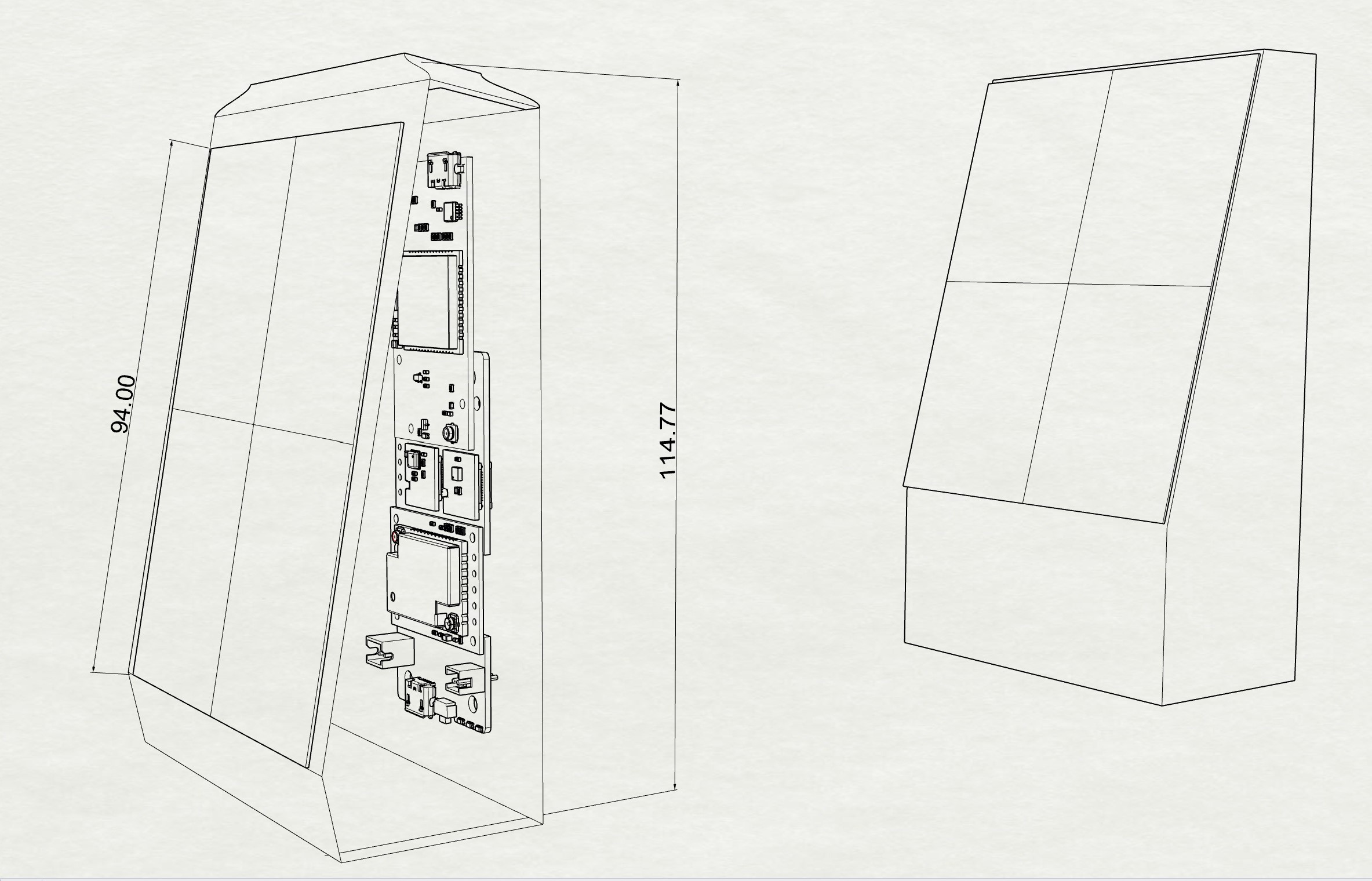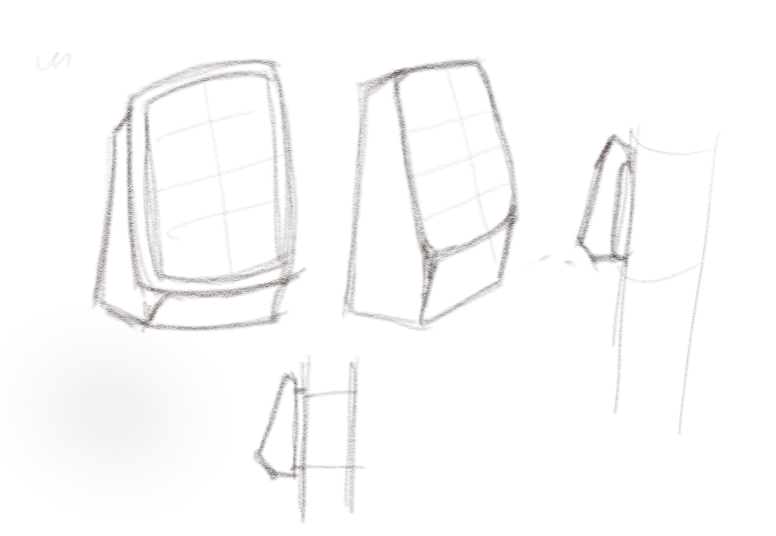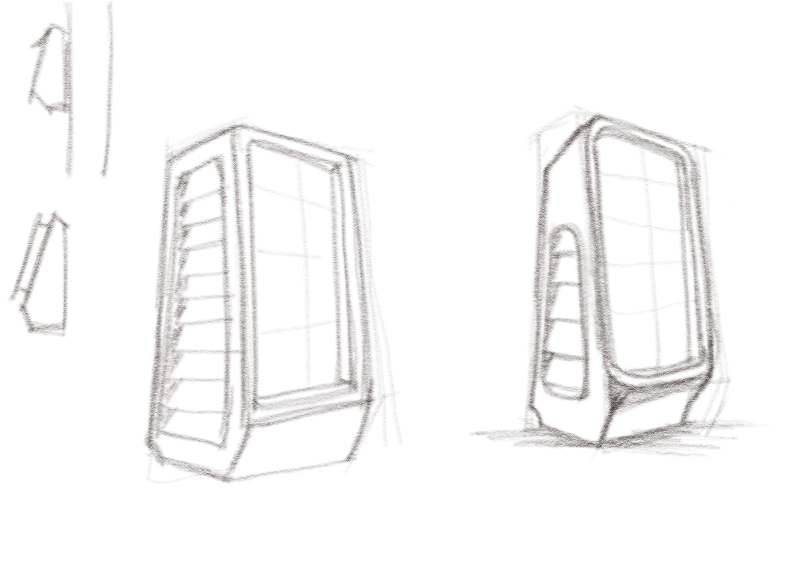The design for this device was heavily influenced by function. There are a few critical considerations, among them:
- It will be located outdoors, therefore it should be of a rugged material
- The body should reflect as much sunlight as possible, to prevent it from warming up inside
- It will has a number of antennas, and the farther apart they are from each other, the better
- There has to be air intake for the gas sensors
- The solar cells determine the minimum dimensions of the unit
I have seen many units with the solar panels in a separated component. However, I wanted to make this one as portable and sturdy as possible, so I went for the "uni-body". An additional advantage is that the oversized dimensions of the solar panel allow for a roomie interior, which helps air circulation for the sensors.
Before working on any sketches, I wanted to explore a bit the possible array inside. We have a main board with a bunch of sub-boards, a big battery, some cables, and that's it.

Once I had the ideal array for function and production, time to sketch some possibilities. These were some of the first sketches:

A very important part is the Stevenson screen, which is a specific "enclosure to meteorological instruments against precipitation and direct heat radiation from outside sources, while still allowing air to circulate freely around them". So, adding the blinds to the enclosure was the next step:

The design looked pretty doable, so I quickly moved on to the development stage.
 Giovanni
Giovanni
Discussions
Become a Hackaday.io Member
Create an account to leave a comment. Already have an account? Log In.